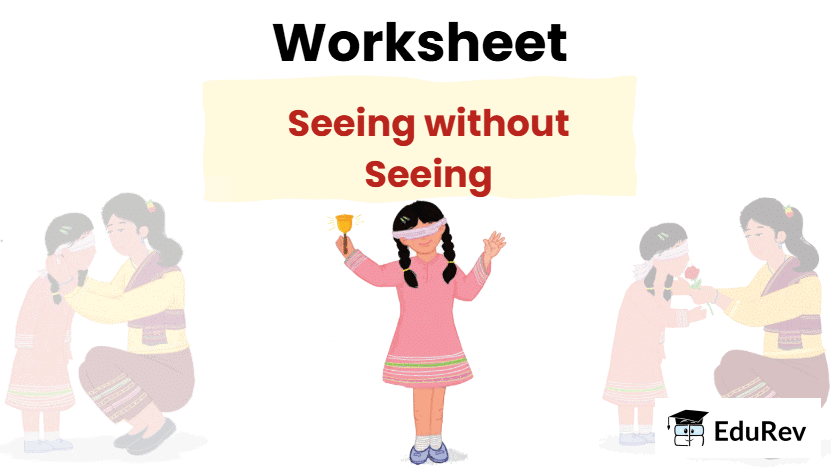Seeing without Seeing - 1 Class 2 Worksheet English
| Table of contents |

|
| Multiple Choice Questions (MCQs) |

|
| Fill in the Blanks |

|
| Match the Column (Sense Game!) |

|
| Sentence Formation |

|
| Activity |

|

Multiple Choice Questions (MCQs)
(i) Where did Onshangla return from?
a) Market
b) School
c) Park
d) Playground
(ii) What did Onshangla place on the table after returning home?
a) Her book
b) Her lunchbox
c) Her bag
d) A flower
 (iii) Who came to Onshangla's class?
(iii) Who came to Onshangla's class?
a) A new girl
b) A new teacher
c) A new boy
d) Her mother
(iv) How did Onshangla recognize the rose?
a) By touching it
b) By smelling it
c) By tasting it
d) Both a and b
 (v) What sound did the small bell make?
(v) What sound did the small bell make?
a) Ding-dong
b) Trin… trin… trin…
c) Beep-beep
d) Ring-ring

Fill in the Blanks
(i) Little Onshangla returned from __________.

(ii) Onshangla opened the door and kept her bag on the __________.
(iii) The new boy in Onshangla's school wears __________ glasses.
(iv) Onshangla successfully identified a __________ during the game.
(v) Ava encouraged Onshangla and her friends to be friends with the new _________.
Match the Column (Sense Game!)

Sentence Formation
(i) Use "school" in a sentence.
(ii) Use "bell" in a sentence.
(iii) Use "juice" in a sentence.
(iv) Use "touch" in a sentence.
(v) Use "smell" in a sentence.
Activity
Q: Write two things you like to smell and two things you like to taste.
The solutions of the worksheet "Seeing without Seeing - 1"
|
1 videos|494 docs
|
FAQs on Seeing without Seeing - 1 Class 2 Worksheet English
| 1. What does "Seeing without Seeing" mean in the context of the article? |  |
| 2. How can one develop the skill of "seeing without seeing"? |  |
| 3. What are some examples of "seeing without seeing" in daily life? |  |
| 4. Why is "seeing without seeing" important in education or learning environments? |  |
| 5. Are there any exercises or activities to practice "seeing without seeing"? |  |





















